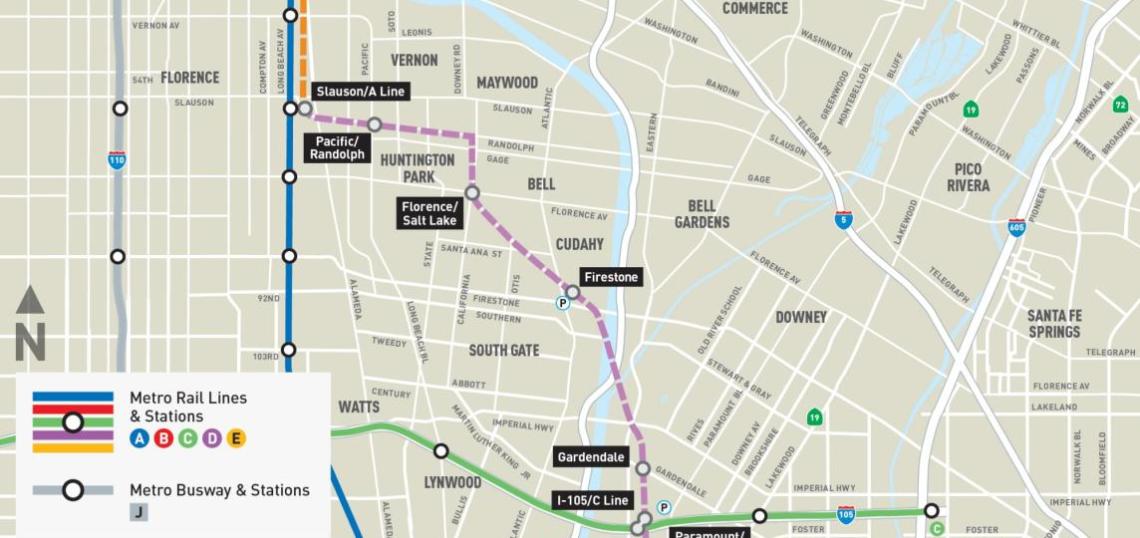The Los Angeles Metro Board of Directors has voted to adopt a final environmental study for the initial segment of the Southeast Gateway Line, which would span between South Los Angeles and Artesia.
“No more waiting and wondering, this project will go forward,” said L.A. County Supervisor and Metro Board Vice Chair Janice Hahn in a news release. “The era of Southeast LA and the Gateway Cities being left behind by new Metro rail projects is over. The cities along the line are ready, future riders are ready, and now we can finally get to work building this transformational project."
The 14.5-mile first phase of the project, which is expected to begin utility relocation by late 2024, would span between the A Line’s Slauson Station and Pioneer Boulevard in Artesia, with eight total stops along a historic rail right-of-way that cuts through Vernon, Huntington Park, Bell, Cudahy, South Gate, Downey, Paramount, Bellflower, and Cerritos. A second phase of the project would stretch north toward Union Station in Downtown Los Angeles, running parallel to the A Line until veering slightly east to travel along Alameda Street. In total, the Southeast Gateway Line would span roughly 19 miles with connections to the A and C Lines, as well as the services at Union Station.
According to Hahn's news release, the project is expected to create up to 46,000 jobs in an area where 44 percent of residents live at or below the poverty line. More than $2 billion in state and local funds have been committed to the project, which will seek federal funding to cover the overall $7.1 billion price tag. The initial segment is expected to cost up to $5.1 billion, according to the FTA.
Currently, it is expected that the initial phase of the project between Slauson and Pioneer could begin serving passengers as early as 2035. The second phase is scheduled to complete work in 2053.
The exact design of the later phase remains a subject of debate, with some Downtown Los Angeles property owners and business advocacy groups pushing to build a subterranean alignment, rather than running trains on a viaduct above Alameda Street. The fully project, if built with a subterranean alignment on Alameda is estimated to be $7.75 billion, versus slightly under $7 billion for the above-grade option Alameda. Establishment of an enhanced infrastructure financing district has been pitched as a means to close the gap between the two alternatives.
Follow us on social media:
Twitter / Facebook / LinkedIn / Threads / Instagram
- Southeast Gateway Line (Urbanize LA)







